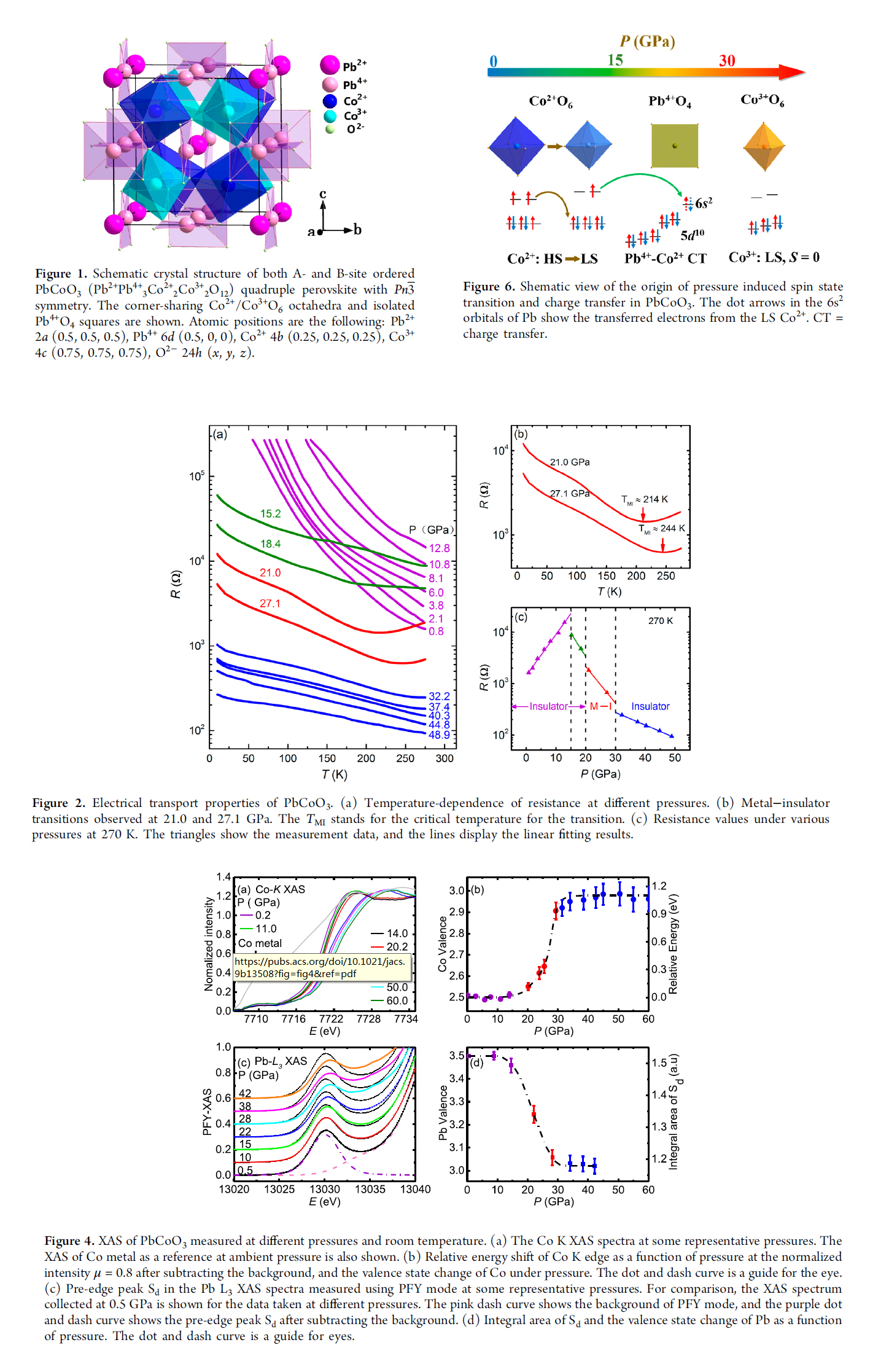在PbCoO3材料中发现系列自旋转变和电荷转移现象
(Sequential Spin State Transition and Intermetallic Charge Transfer in PbCoO3 )
Z. H. Liu, Y. Sakai, J. Y. Yang, W. M. Li, Y. Liu, X. B. Ye, S. J. Qin, J. M. Chen, S. Agrestini, K. Chen, S. C. Liao, S. C. Haw, F. Baudelet, H. Ishii, T. Nishikubo, H. Ishizaki, T. Yamamoto, Z. Pan, M. Fukuda, K. Ohashi, K. Matsuno, A. Machida, T. Watanuki, S. I. Kawaguchi, A. M. Arevalo-Lopez, C. Q. Jin, Z. W. Hu, J. P. Attfield, M. Azuma & Y. W. Long
J. Am. Chem. Soc. 142, 5731 (2020)
Spin state transitions and intermetallic charge transfers can essentially change material structural and physical properties while excluding external chemical doping. However, these two effects have rarely been found to occur sequentially in a specific material. In this article, we show the realization of these two phenomena in a perovskite oxide PbCoO3 with a simple ABO3 composition under high pressure. PbCoO3 possesses a peculiar A- and B-site ordered charge distribution Pb2+Pb4+3Co2+2Co3+2O12 with insulating behavior at ambient conditions. The high spin Co2+ gradually changes to low spin with increasing pressure up to about 15 GPa, leading to an anomalous increase of resistance magnitude. Between 15 and 30 GPa, the intermetallic charge transfer occurs between Pb4+ and Co2+ cations. The accumulated charge-transfer effect triggers a metal?insulator transition as well as a first-order structural phase transition toward a Tetra.-I phase at the onset of ~20 GPa near room temperature. On further compression over 30 GPa, the charge transfer completes, giving rise to another first-order structural transformation toward a Tetra.-II phase and the reentrant electrical insulating behavior.
